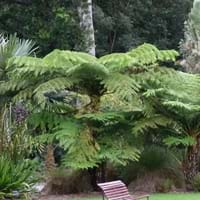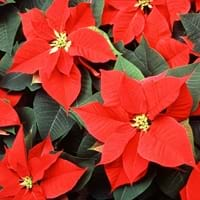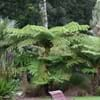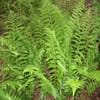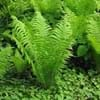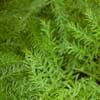Life Span
Perennial
Perennial
Types
Not Available
Prestige Red Poinsettiea, Snowcap White Poinsettia, Sparkling Punch Poinsettia, Enduring Pink Poinsttia
Number of Varieties
Not Available
Habitat
Damp Places
Forest edges, Tropical regions
USDA Hardiness Zone
10-15
9-15
Sunset Zone
H2, 8, 9, 14, 15, 16, 17, 19, 20, 21, 22, 23, 24
H1, H2, 13, 16, 17, 18, 19, 20, 21, 22, 23, 24
Habit
Arching/Fountain-shaped
Upright/Erect
Flower Color
Non Flowering Plant
Yellow, Red, Light Pink, Coral
Flower Color Modifier
Bicolor
Multi-Color
Fruit Color
Not Available
Not Available
Leaf Color in Spring
Light Green
Green, Dark Green
Leaf Color in Summer
Dark Green
Dark Green
Leaf Color in Fall
Dark Green
Dark Green
Leaf Color in Winter
Dark Green
Green, Dark Green
Leaf Shape
Fern like
Bracts
Plant Season
Spring, Summer, Fall, Winter
Fall, Winter
Sunlight
Partial shade
Full Sun, Partial Sun
Type of Soil
Loam
Loam, Sand
The pH of Soil
Acidic
Acidic, Neutral
Soil Drainage
Average
Well drained
Bloom Time
Not Available
Late Fall, Early Winter, Winter
Tolerances
Not Available
Drought
Where to Plant?
Ground
Container, Ground, Pot
How to Plant?
Spores
Seedlings
Plant Maintenance
Medium
Medium
Watering Requirements
Requires consistently moist soil
Keep the ground moist but not water-logged, Requires regular watering, Requires watering in the growing season
In Summer
Lots of watering
Lots of watering
In Spring
Moderate
Moderate
In Winter
Average Water
Average Water
Soil pH
Acidic
Acidic, Neutral
Soil Type
Loam
Loam, Sand
Soil Drainage Capacity
Average
Well drained
Sun Exposure
Full Shade, Partial shade
Full Sun, Partial Sun
Pruning
Remove damaged leaves, Remove dead branches, Remove dead leaves
Do not prune during shooting season, Prune after flowering, Prune lower leaves, Prune to control growth, Requires little pruning
Fertilizers
All-Purpose Liquid Fertilizer
All-Purpose Liquid Fertilizer
Pests and Diseases
Squirrels
Bacterial Stem Rot, Botrytis Blight, Canker, Powdery mildew, Pythium rot, Rhizoctonia Root Rot
Plant Tolerance
Drought
Drought
Flower Petal Number
Single
Single
Foliage Texture
Fine
Coarse
Foliage Sheen
Matte
Matte
Attracts
Ants
Not Available
Allergy
Carcinogenic
Eye irritation, Mouth itching, Skin rash, Stomach burn, Throat itching
Aesthetic Uses
Not Available
Beautification, Bouquets, Showy Purposes
Beauty Benefits
Not Available
Not Available
Environmental Uses
Air purification
Air purification
Medicinal Uses
Astringent
Fever, Pain killer, Tooth ache
Part of Plant Used
Leaves, Stem
Flowers, Leaves
Other Uses
Not Available
Economic Purpose, Showy Purposes, Used as Ornamental plant
Used As Indoor Plant
No
Yes
Used As Outdoor Plant
Yes
Yes
Garden Design
Container, Feature Plant, Tropical
Container, Feature Plant, Houseplant, Mixed Border, Tropical
Botanical Name
DICKSONIA antarctica
EUPHORBIA pulcherrima '490 Jingle Bells'
Common Name
Australian tree fern, Tasmanian tree fern, hardy tree fern, soft tree fern, woolly tree fern
Poinsettia
In Hindi
Tasmanian Tree Fern
Poinsettia
In German
Tasmanian Tree Fern
Poinsettia
In French
Dicksonia antarctica
Poinsettia
In Spanish
Balantium antarcticum
Poinsettia
In Greek
Tasmanian Tree Fern
Αλεξανδρινό
In Portuguese
Dicksonia antarctica
Poinsétia
In Polish
Diksonia antarktyczna
Poinsecja
In Latin
Tasmanian Tree Fern
Poinsettia
Phylum
Pteridophyta
Anthophyta
Class
Filicopsida
Eudicotyledones
Order
Polypodiales
Malpighiales
Family
Dicksoniaceae
Euphorbiaceae
Genus
Dicksonia
Euphorbia
Clade
Not Available
Angiosperms, Eudicots, Rosids
Tribe
Not Available
Not Available
Subfamily
Not Available
Not Available
Number of Species
Not Available
Season and Care of Tasmanian Tree Fern and Poinsettia
Season and care of Tasmanian Tree Fern and Poinsettia is important to know. While considering everything about Tasmanian Tree Fern and Poinsettia Care, growing season is an essential factor. Tasmanian Tree Fern season is Spring, Summer, Fall and Winter and Poinsettia season is Spring, Summer, Fall and Winter. The type of soil for Tasmanian Tree Fern is Loam and for Poinsettia is Loam, Sand while the PH of soil for Tasmanian Tree Fern is Acidic and for Poinsettia is Acidic, Neutral.
Tasmanian Tree Fern and Poinsettia Physical Information
Tasmanian Tree Fern and Poinsettia physical information is very important for comparison. Tasmanian Tree Fern height is 240.00 cm and width 120.00 cm whereas Poinsettia height is 35.60 cm and width 45.70 cm. The color specification of Tasmanian Tree Fern and Poinsettia are as follows:
Tasmanian Tree Fern flower color: Non Flowering Plant
Tasmanian Tree Fern leaf color: Light Green
Poinsettia flower color: Yellow, Red, Light Pink and Coral
- Poinsettia leaf color: Green and Dark Green
Care of Tasmanian Tree Fern and Poinsettia
Care of Tasmanian Tree Fern and Poinsettia include pruning, fertilizers, watering etc. Tasmanian Tree Fern pruning is done Remove damaged leaves, Remove dead branches and Remove dead leaves and Poinsettia pruning is done Do not prune during shooting season, Prune after flowering, Prune lower leaves, Prune to control growth and Requires little pruning. In summer Tasmanian Tree Fern needs Lots of watering and in winter, it needs Average Water. Whereas, in summer Poinsettia needs Lots of watering and in winter, it needs Average Water.
